Affiliate links on Android Authority may earn us a commission. Learn more.
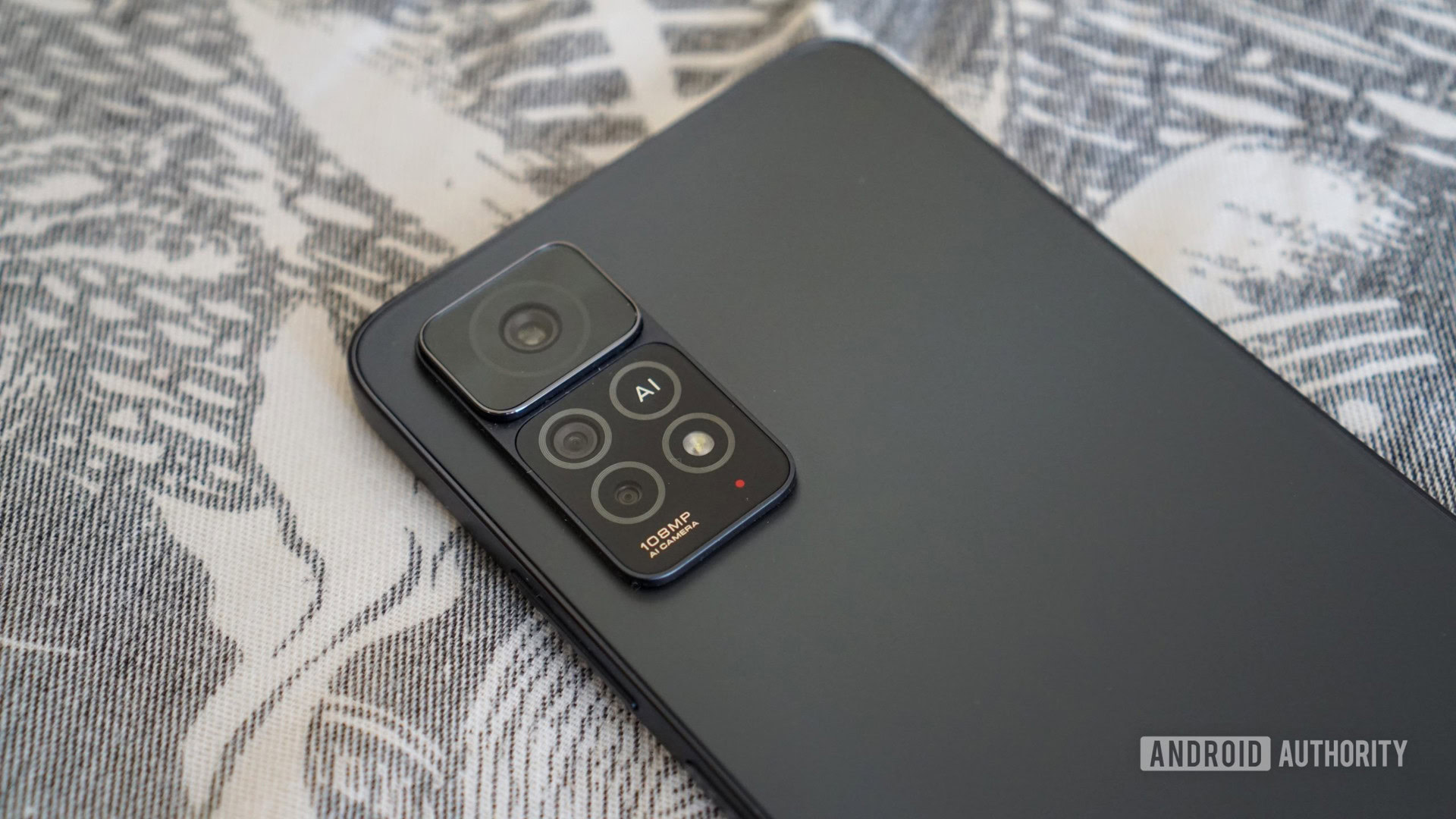
Redmi Note 11 Pro 5G
MSRP:
What we like
What we don't like
Redmi Note 11 Pro 5G
The Redmi Note series is Xiaomi‘s bread and butter, selling millions of units each year via the sub-brand and usually offering a ton of value for money for buyers. The Redmi Note 11 series is absolutely chock-full of devices with increasingly confusing naming conventions and sporadic regional availability, but the Redmi Note 11 Pro 5G is the “Pro” model hitting European shores. But does it get lost in the shuffle, or is it still a standout offering? That’s what we’re aiming to answer in our Redmi Note 11 Pro 5G review.
What you need to know about the Redmi Note 11 Pro 5G
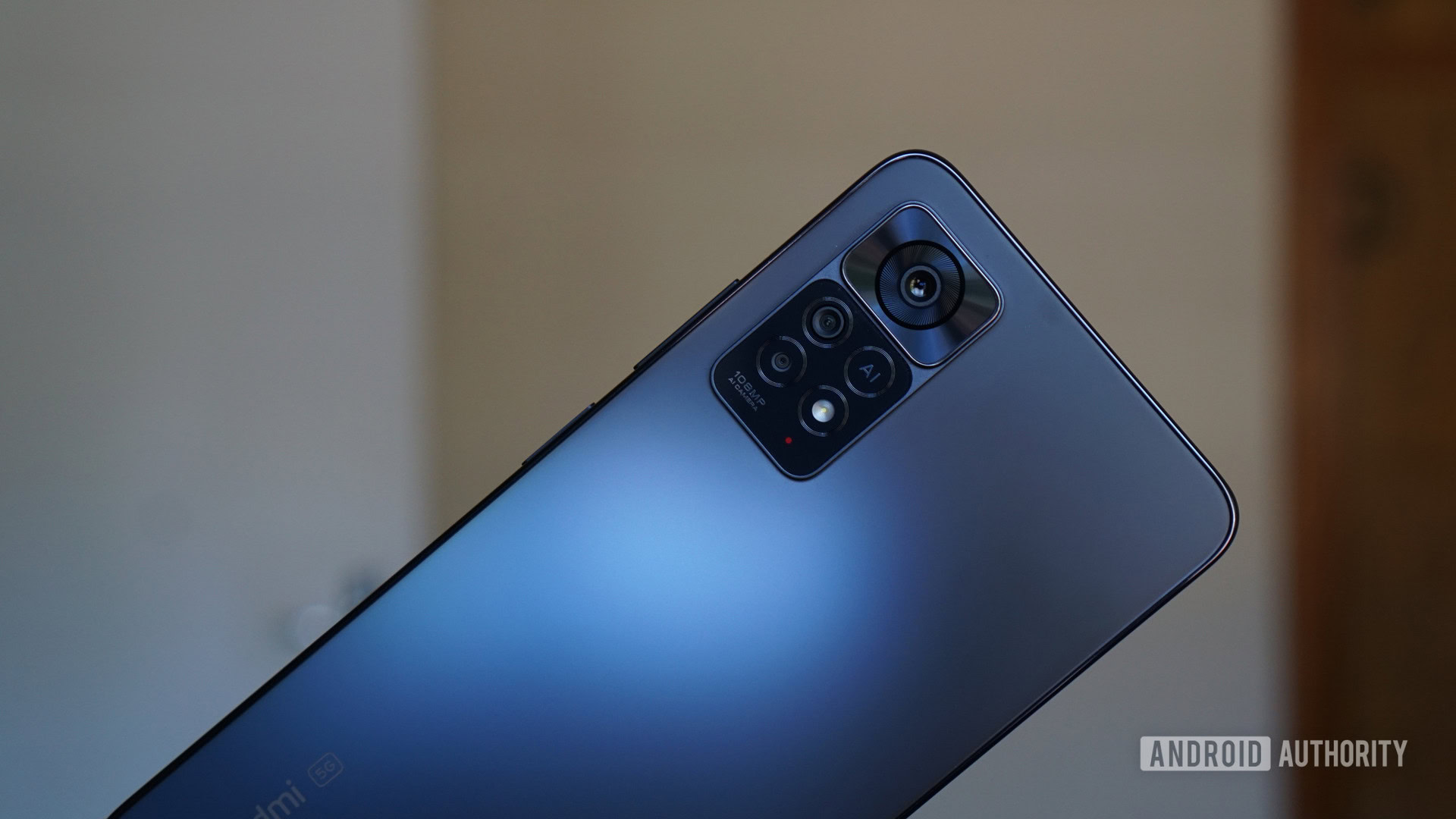
- Redmi Note 11 Pro 5G (6GB/128GB): £319 / €369 / Rs. 24,999
- Redmi Note 11 Pro 5G (8GB/128GB): €379/ Rs. 26,999
The Redmi Note 11 Pro 5G is second from the top on the Redmi Note 11 series totem pole, sitting below the Redmi Note 11 Pro Plus that recently came to global markets, but above the Redmi Note 11 and its many, many variants.
If you’re looking at the spec sheet and wondering why the Redmi Note 11 Pro 5G looks so familiar, you’re not alone. We previously reviewed the POCO X4 Pro which is essentially a rebranded Note 11 Pro with a tweaked design and the POCO Launcher atop MIUI.
As with the POCO, it’s a pretty well-rounded mid-range phone on paper, featuring a 6.67-inch 120Hz OLED panel, Snapdragon 695 5G chipset, and a 5,000mAh battery with 67W charging. Xiaomi’s phone is also equipped with a 108MP main camera, 8MP ultrawide, and a 2MP macro lens.
Check out: The best budget phones
It’s also worth noting that the Redmi Note 11 Pro 4G is nearly identical to the 5G variant save for the lack of 5G connectivity and the switch to a weaker MediaTek Helio G96 chipset.
The Redmi Note 11 Pro 5G went on sale in the UK on April 8 and is available to buy from the official Mi store, Amazon, Currys, Argos, and Very, as well as carrier partners Vodafone, Three, and O2. The phone is also available in other parts of Europe, and India (where it retails as the Redmi Note 11 Pro Plus 5G). As with the POCO, it was priced in US dollars at launch, but the phone isn’t officially available in North America.
Expect to find the phone in Atlantic Blue, Graphite Gray, and Polar White colorways.
What’s good?
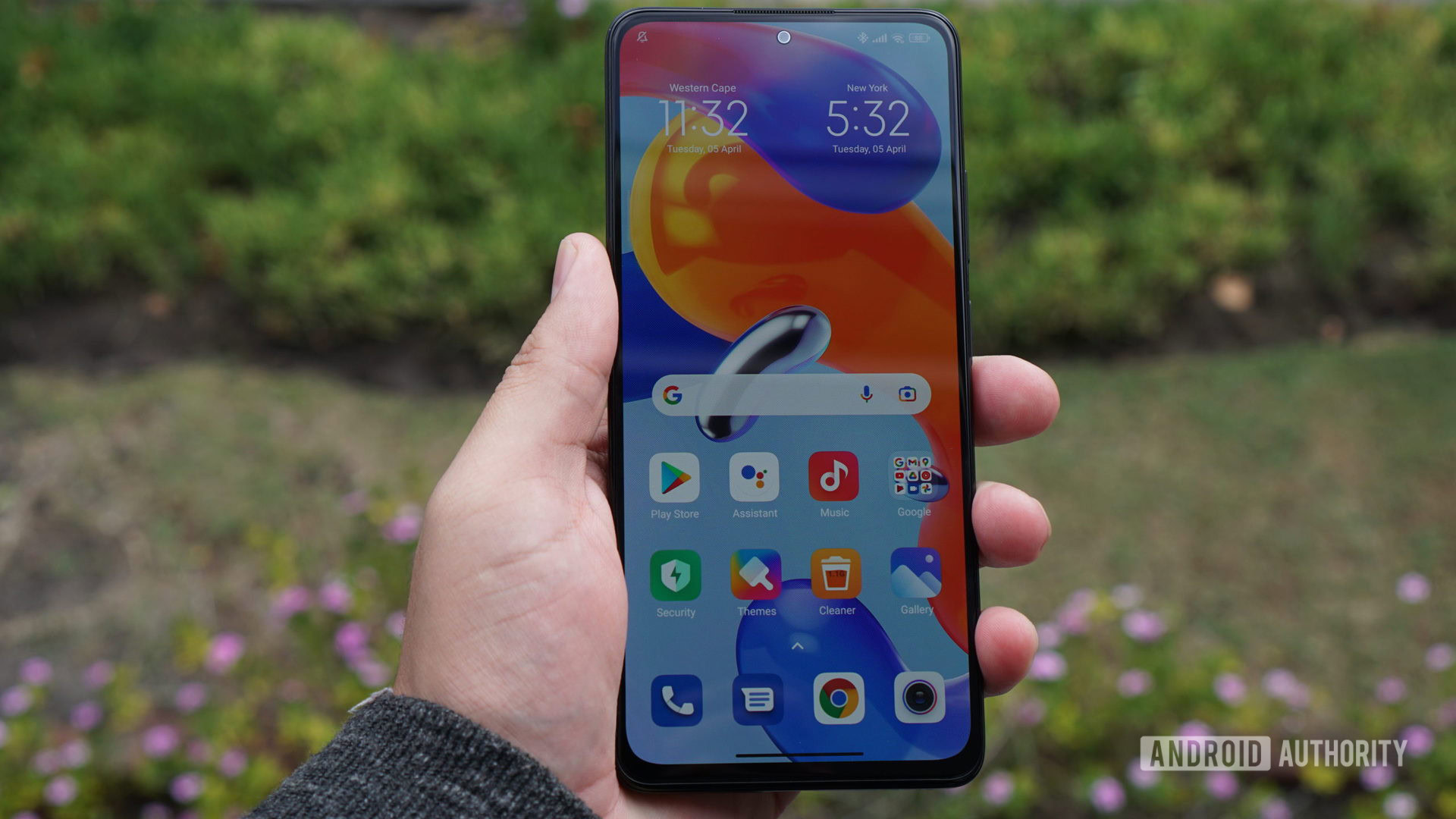
Much like the POCO X4 Pro, the 120Hz OLED panel is really the star here. It’s plenty bright for outdoor viewing and that FHD+ resolution is sharp enough for its price range. Throw in true black hues and great viewing angles and you’ve got a great experience here. It’s really one area where budget phones have taken a massive step forward in recent years and we’re glad to see this trend continue in 2022. You can choose between an adaptive 120Hz refresh rate or a locked 60Hz, but the adaptive refresh rate only drops down to 60Hz (and even then only rarely).
Fortunately, you won’t really feel the need to switch on battery-saving modes, owing to the 5,000mAh battery on board here. I tried to push this phone a bit with some gaming (Genshin Impact and a couple of other less demanding titles) and several hours of YouTube videos with the screen set to adaptive 120Hz, but the phone lasted until about mid-morning the next day. In fact, I typically got over eight hours of screen-on time between charges. You can generally expect about a day and a half of battery life with more typical usage (Telegram, Reddit, some gaming), but two days of endurance is definitely within reach here.
The company claims a zero to 100% charging time of 42 minutes via 67W charging, but it took ~50 minutes in my experience. Either way, you’re still getting very brisk charging times and Redmi includes a proprietary fast charger in the box.
The Redmi Note 11 Pro 5G's two major selling points are a great screen and long battery life.
Xiaomi’s phone is equipped with a 108MP main camera, 8MP ultrawide lens, and 2MP macro sensor. The primary camera delivers pleasing daytime snaps with a solid level of detail, tamed noise, and a good level of dynamic range for 12MP shots. Portrait snaps during the day could do with far more accurate depth estimation though.
Low-light shots are pretty dark and noisy as standard although the night mode makes a big difference here in capturing usable shots. There’s more detail in the full-resolution 108MP shooting mode for pixel-peeping but you lose out elsewhere due to an increase in noise and poor dynamic range — you’ll want to stick to 12MP most of the time.
Moving to the design, I definitely prefer the Redmi Note 11 Pro 5G’s look compared to the POCO X4 Pro. While the POCO device adopts an unnecessarily huge camera housing, the Redmi device opts for a more conventional camera bump. This does mean you’ve got a bit more wobble on the Redmi Note 11 Pro 5G when it’s flat on a table, but the upside is that you don’t have garish branding on the housing itself. Either way, the IP53 rating is still a welcome addition at this price.
Redmi also nailed some other hardware elements here, like the speedy yet accurate side fingerprint scanner and the stereo speakers. In the case of the latter, you can expect some decently loud audio, with a similar amount of volume coming from each speaker. Either way, I found it to be great when listening to podcasts. Toss in an IR blaster, microSD support, and the 3.5mm headphone jack and you’ve got a power user feature-set at a mid-range price.
What’s not so good?
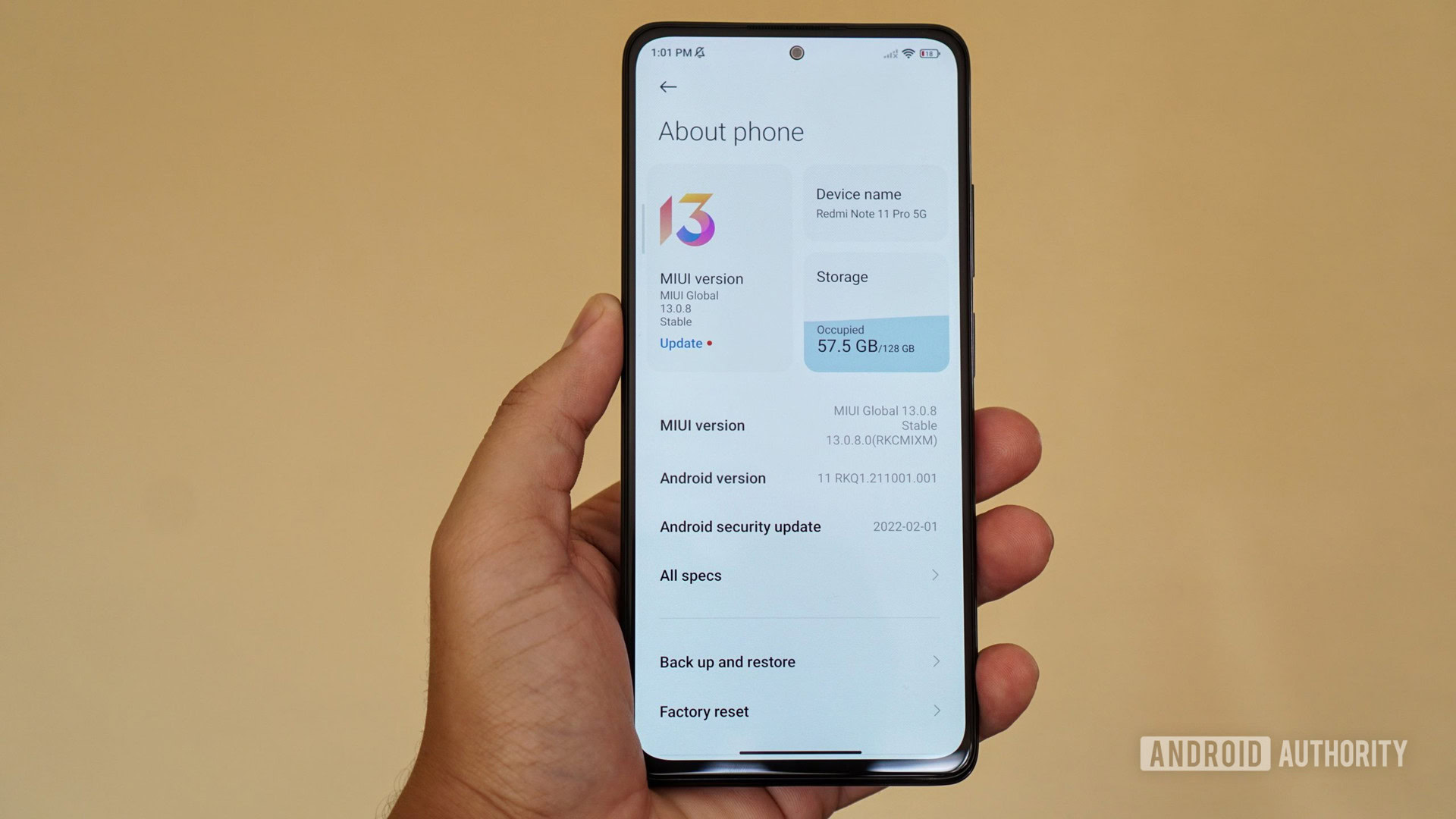
Our main problem with the POCO X4 Pro was the fact that its software was pretty buggy. Glitches like music cutting out and issues with 108MP shots were all issues then. MIUI on the Redmi Note 11 Pro 5G seemed more polished in our testing without POCO’s launched on top, although I did witness the Camera app crash twice. Xiaomi’s MIUI skin is still a polarizing experience from an aesthetic point of view, but there are several other areas that need improvement too.
For one, Redmi still insists on loading the skin with ads. These can indeed be turned off with a couple of steps, but you can tell MIUI is designed around ads when the skin insists on showing a full-sized interstitial screen when installing an app. This screen still appears when ads are turned off (and on POCO phones, which are ad-free to begin with). It’s nothing new and is part of the price you pay for getting decent hardware this cheap, but it’s no less annoying.
The ads can be disabled and there are loads of features, but MIUI still looks and feels less modern than several other third-party skins.
There are a few other software annoyances here, such as a copious amount of bloatware (Amazon, Facebook and its insidious system apps, several games), the clunky iOS-like Control Center, and the app drawer being disabled by default. It also arrives running Android 11 instead of Android 12, which at the time of this writing has been available on other phones for seven months.
It’s also a little disappointing that Redmi hasn’t publicly disclosed any sort of update commitment for the Redmi Note 11 series and the Pro 5G in particular. This comes at a time when Samsung is launching mid-range phones with four years of OS updates and five years of security patches. Overall, MIUI continues to offer loads of useful features, but the support and user experience is found lacking.
While the Redmi Note 11 Pro 5G’s main camera is a reliable shooter for the price, the 8MP ultrawide camera has the usual budget trappings, such as inconsistent color reproduction compared to the main camera, soft corners, and quite a bit of noise even during the day. Meanwhile, the 2MP macro lens is just a token sensor to pump up the numbers due to the cripplingly low resolution. The selfie camera isn’t much to write home about either. It struggles with dynamic range in backlit scenes and there is visible noise even in shots taken during the day. You can check out some camera samples in the next section.
We were disappointed to find that the POCO X4 Pro didn’t offer 1080p/60fps video recording, topping out at 1080p/30fps instead but at least offering a 720p/60fps option. We expected a similar situation here, but the Redmi Note 11 Pro 5G is actually worse. It tops out at 1080p/30fps, but there’s no 720p/60fps option at all. That’s right: despite being the same phone with the same chipset running the show, we’ve somehow got inferior video quality options here.
Speaking of the chipset, the Snapdragon 695 is a solid budget chipset for everyday performance, 5G connectivity (sub-6GHz only), and some gaming. Yet while you can play some advanced games like Genshin Impact with low graphics, this is far from a future-proof platform. Those hoping to play the most advanced games a year or two from now or demanding emulators right now should give this a pass. Just looking for enough power for a smooth everyday experience, the occasional game, and using the camera? Then you’re covered well enough here.
Redmi Note 11 Pro 5G camera samples
Redmi Note 11 Pro 5G specs
| Redmi Note 11 Pro 5G | |
|---|---|
Display | 6.67-inch AMOLED FHD+ 120Hz refresh rate 360Hz touch sampling rate |
Chipset | Qualcomm Snapdragon 695 |
GPU | Adreno 619 |
RAM | LPDDR4X 6/8GB |
Storage | UFS 2.2 64/128GB MicroSD card slot |
Battery | 5,000mAh USB-C 67W charging |
Cameras | Rear: 108MP standard 8MP ultrawide 2MP macro Front: 16MP |
Audio | 3.5mm headphone jack Dual speakers |
Software | MIUI 13 Android 11 |
Colors | Graphite Gray Polar White Atlantic Blue |
Dimensions and weight | 164.19 x 76.1 x 8.12mm 202g |
Redmi Note 11 Pro 5G review: Should I buy it?
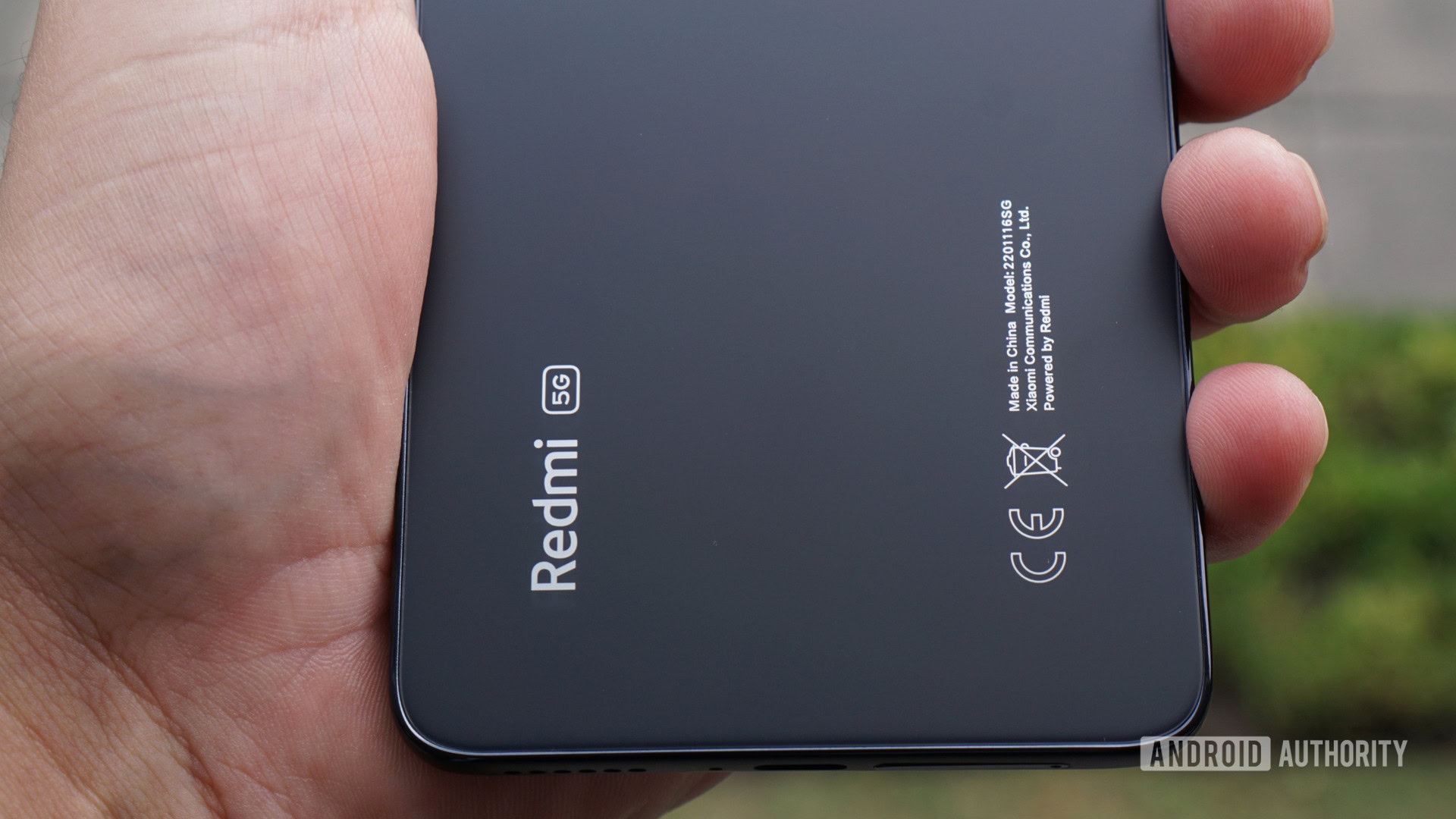
There’s a lot to like about the Redmi Note 11 Pro 5G, such as that pleasant 120Hz OLED screen, great battery life, IP53 rating, and good daytime shots with the 108MP main camera. There are a few downsides to this year’s Pro model too, such as the older version of Android, video quality topping out at a measly 1080p/30fps, and an Android skin that’s more annoying than it needs to be.
The Redmi Note 11 Pro 5G would be a no-brainer purchase on its own, but the device exists in Xiaomi’s bloated portfolio, which doesn’t do it any favors.
The POCO X4 Pro (£259) is unarguably the strongest contender within Xiaomi’s own portfolio as it’s just a rebranded Redmi Note 11 Pro 5G with some minor tweaks and a cheaper price tag. We thought it could use some software polish, but you do get a different design, marginally better video support, and the more intuitive, ad-free POCO Launcher. You’re basically paying £60 less (or €70 less in other European regions) for the same phone with no ads, making the Redmi Note 11 Pro 5G look silly in the process.
The Redmi Note 11 Pro 5G would be a great purchase in isolation, but there are loads of alternatives from Xiaomi itself.
Another contender in Xiaomi’s stable is last year’s Redmi Note 10 Pro (£249) which is still a solid buy and goes for closer to £200 on sale. It also offers a 120Hz OLED screen and 108MP main camera. You do miss out on 5G and 67W charging, but at least you get a superior macro camera on the older device. Want something newer? The Redmi Note 11 (£199) should also be near the top of your list. Features like a 90Hz OLED screen, huge battery, and a good level of horsepower mean that you still get a great experience without spending extra cash.
Looking outside the Xiaomi stable, the Samsung Galaxy A33 5G (€369) is perhaps the most prominent contender out there. Samsung’s phone has a lower refresh rate (90Hz), sacrifices main camera resolution, a 3.5mm port, and settles for ho-hum 25W charging. But the Galaxy A33 5G brings a 48MP main camera with OIS as well as an IP67 rating that’s rare at this price point. It’ll also be supported for years to come with software updates.
Don’t mind spending a little extra? Then the Samsung Galaxy A53 5G (£399) warrants consideration too. Samsung’s brand-new mid-ranger isn’t as fast on the charging front, but you’re getting a faster processor on paper, a much longer update policy, OIS on the 64MP main camera, and an IP67 rating.
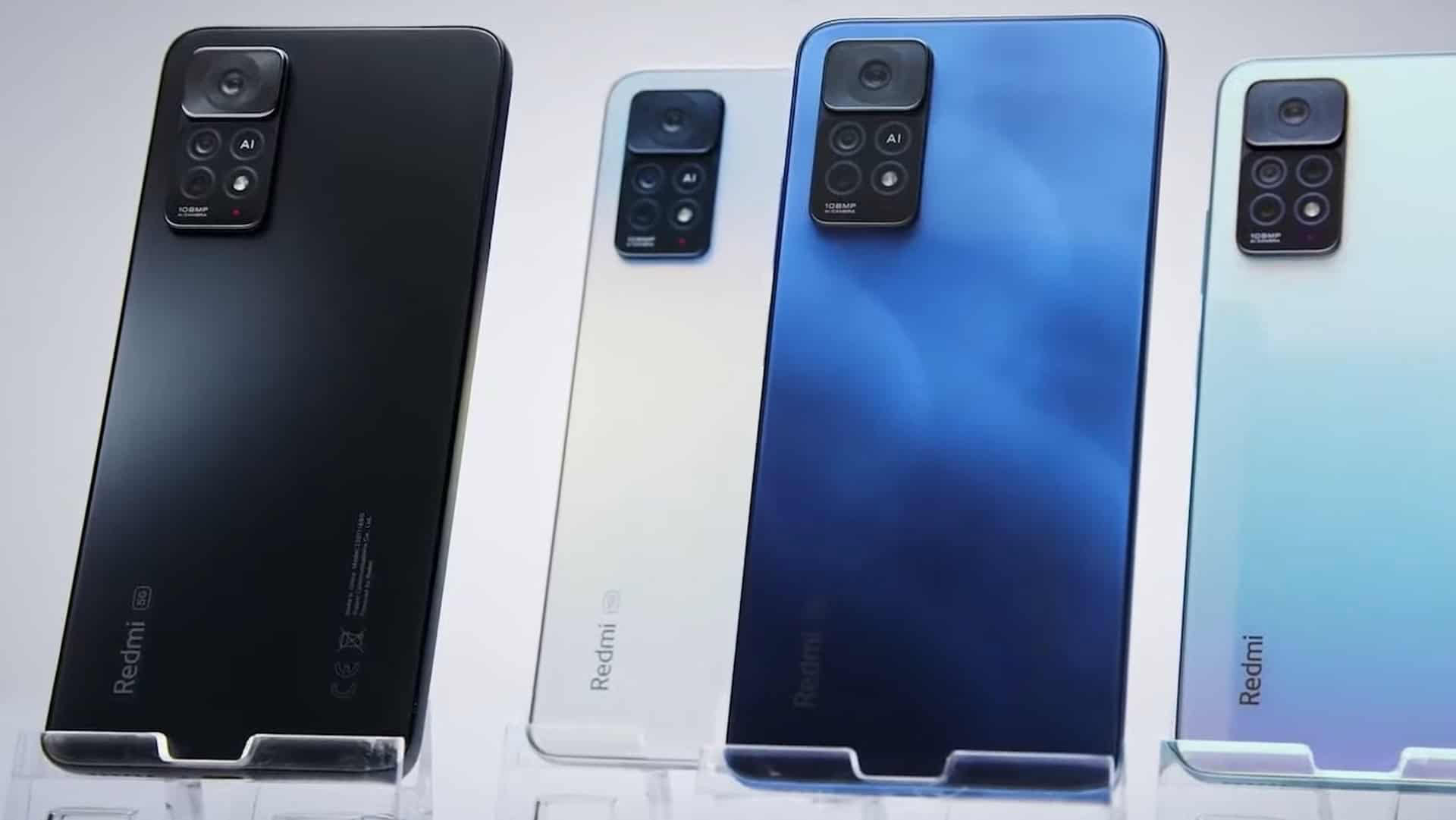
Top Redmi Note 11 Pro 5G questions and answers
The Redmi Note 11 Pro 5G is a solid budget phone from the Xiaomi sub-brand which is worth buying so long as you can’t get the POCO X4 Pro in your region. The POCO phone is a near-identical copy of the Redmi Note 11 Pro 5G but comes with a lower price tag that makes it an even better buy.
The Redmi Note 11 Pro 5G has an IP53 rating for splash resistance.
Yes, the Redmi Note 11 Pro 5G has a 3.5mm headphone port.
Yes, the Redmi Note 11 Pro 5G has NFC.
Yes, the Redmi Note 11 Pro 5G will accept microSD cards via the hybrid dual nano-SIM tray.